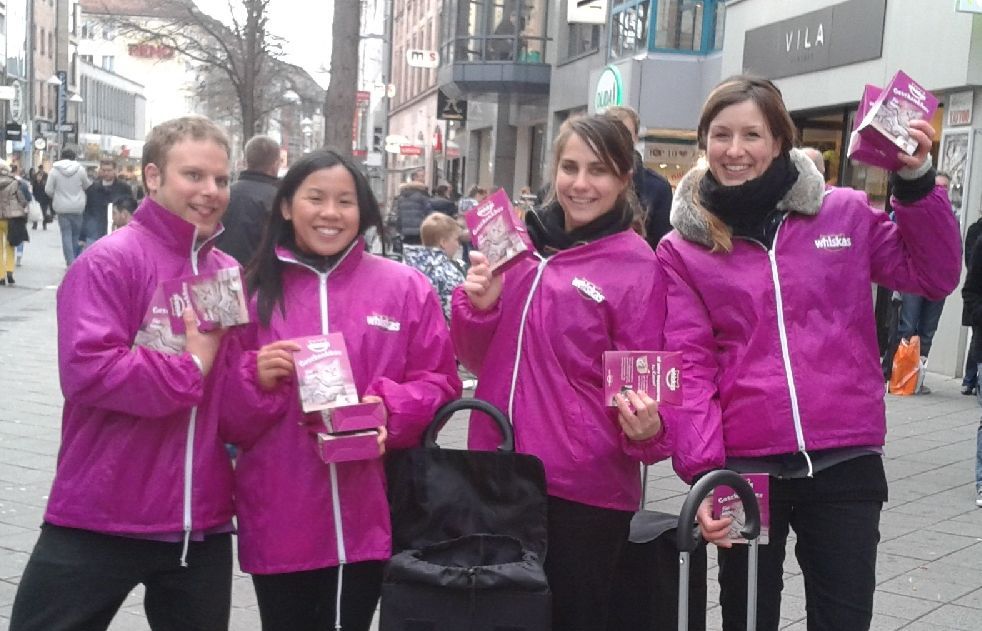Customers are looking for a direct contact with the brand. To meet this need, it is so essential to listen to the consumer.
Using field marketing is a way to address customers directly, increase brand awareness and thus promote product sales.
Field marketing is regarded as one of the most effective forms of sales promotion as it establishes direct contact with the consumer by allowing interaction between a brand ambassador and a customer. This lends a high level of credibility to the product and the brand.
It is decisive for the success of a field marketing campaign that the activators engaged are qualified as ambassadors of the company, as they represent the brand on site and thus establish a direct connection between the brand and the customer.
Field marketing thus consists of promotional activities in the shopping and living environment (POS or POC) to increase the sales of a product.
There are various ways to carry out field marketing campaigns. Here are some important activities that field marketing offers.
Product demonstrations
This option is typically used in supermarkets, department stores and other places where a purchase can be made.
Product demonstrations can also be carried out in places where the public cannot make an immediate purchase, such as trade fairs and exhibitions. In these cases, the essential content of any promotional event is to invite the customer to try the product and arouse his interest so that he can learn more about the products and subsequently make a purchase.
Point of sale promotions
Point-of-sale promotions should be implemented with high frequency. In the context of these campaigns, the promoters support the consumer in his purchase decision, as they present an offer that is new to him.
The promotional person in charge of this particular form of communication must be well educated in order to conscientiously accompany the contact with the customer and ensure an adequate service.
On-street promotions
In on-street promotions, promotion teams usually distribute e.g. flyers, brochures, information material or other promotional material in busy areas with a high frequency of the desired target group.
Such promotional activities are also used to be present at trade fairs or open-air events. Street promotions create a connection to the brand and provide initial access to the advertised product through the distribution of information material.
Merchandising
The aim of merchandising is to present the products as attractively as possible in order to arouse consumer curiosity.
This approach requires clear agreements with retailers to ensure the most sustainable presentation possible. Strategic points can be defined in the shops (hot spots).
Merchandising is about reaching the target group at every stage of the buying process (problem identification, information search, evaluation of alternatives, purchase decision).
Field marketing can be used in many fields of daily life, especially when consumers are physically present. After all, experience shows that many customers make a spontaneous purchase decision.
Field marketing can also target early adapters. They should share their experiences with friends and family and thus draw attention to a particular product or service.
Field marketing activities can therefore be summarised as follows: Planning field campaigns, implementing projects, coordinating and training promoters, interaction between brands and retailers, and analysing metrics and sales figures.
Field marketing allows a brand to be present where their potential customers are. As a result, it is an ideal marketing discipline to attract customers, build good relationships with consumers and increase their engagement.
